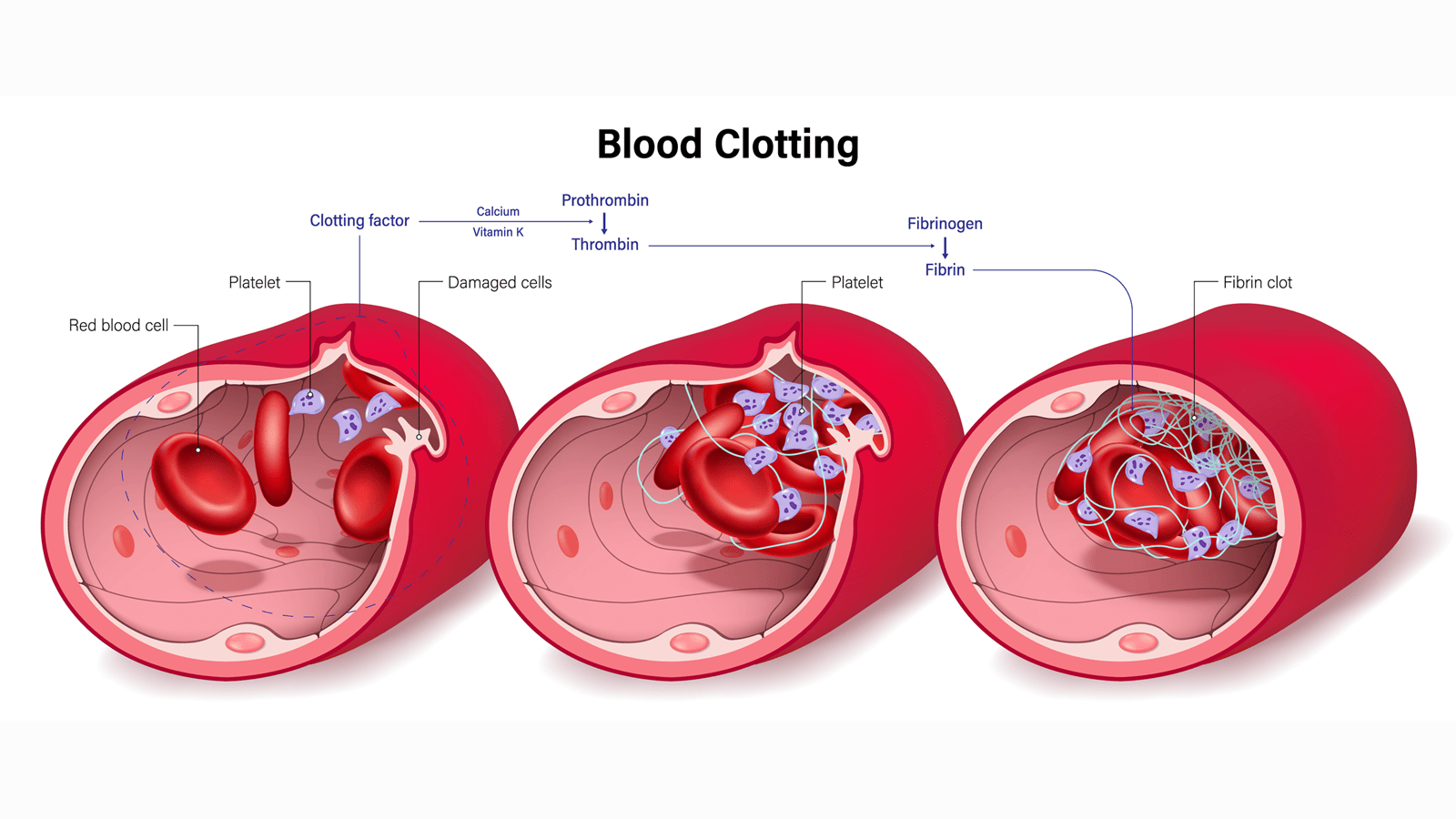The body depends on proteins called clotting factors to stop bleeding and form clots following an injury. Whether you cut your finger slicing vegetables or have surgery, various clotting factors play a key role in the coagulation cascade.
How clotting factors work
What happens exactly? A type of blood cell called platelets and clotting factors (proteins) in plasma work together to stop the bleeding and form a clot, according to the American Society of Hematology. If your body has the ingredients needed for coagulation, your cut or surgical incision stops bleeding.
Clotting factors help convert a protein in the blood called fibrinogen into adhesive fibrin threads, explains the NHS Blood and Transplant service. Fibrin forms a meshwork to transform temporary platelet plugs into gel-like clots. Blood clots, such as deep vein thrombosis, can be a serious health threat. But here we’re talking about clots that stop bleeding in a healing way.
There are 10+ blood clotting factors - each with its own job
The various clotting factors – most of which are produced in the liver – play their own roles in the clot formation process, according to the National Bleeding Disorders Foundation. If someone lacks one of the clotting factors or one of the factors doesn’t work as it should, they are at risk of bleeding and may rely on a replacement clotting factor delivered as medicine intravenously. With treatment, people who have bleeding disorders can and do play sports and enjoy other physical activities.
Learn about CSL Behring’s Gettin’ In the Game Junior National Championship.
Problems with clotting factors are often inherited
Many bleeding disorders are genetic, or passed down from parent to child, with the most commonly known being hemophilia. A 2019 study by the World Federation of Hemophilia (WFH) estimated more than 1 million boys and men around the world have hemophilia and many are undiagnosed. In hemophilia A, the person lacks Factor VIII, and in hemophilia B, the patient lacks Factor IX. The condition disproportionately affects males because of the gene that instructs the body to make Factor VIII and Factor IX is located on the X chromosome.
Learn how young hemophilia patients learn to self-infuse replacement factor.
Though it’s more rare, women can have hemophilia or be considered “carriers” because they could pass the condition to a son. A less well-known condition, von Willebrand Disease, occurs because von Willebrand factor is either lacking or deficient. It can cause excessive menstrual bleeding and cuts and injuries can take longer to stop bleeding.
The most prevalent bleeding disorder among men and boys globally is hemophilia A with 400 U.S. baby boys born with hemophilia A each year. More than half of hemophilia A patients have severe symptoms, according to the NBDF.
Like hemophilia A, hemophilia B is also genetic. The condition is less common than hemophilia A and nearly half of patients experience mild symptoms.
Bleeding disorders are rare diseases
As the NBDF explains, hemophilia and other clotting factor deficiencies are all rare diseases, occurring in fewer than 200,000 individuals in the United States. Other bleeding disorders include Factor X Deficiency with an incidence of 1 in 500,000 to 1 million, Factor XIII Deficiency – which affects an estimated one in 5 million births and von Willebrand Disease, which affects about 1% of women.
Learn more about bleeding disorders and their impact on patients.



